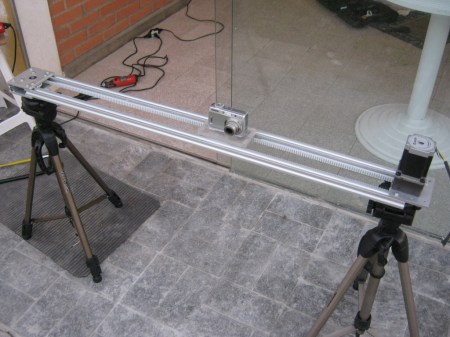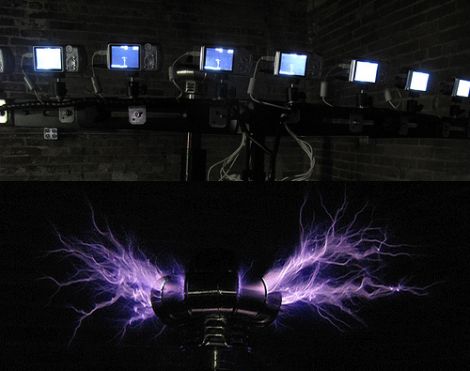[Henrique] wrote in to tell us about his time-lapse photography hack. Triggering of the camera is done via CHDK, or Canon Hack Development kit. This experimental kit allows Canon Powershot cameras to run scripts as well as other neat features without permanently changing anything. User scripts for this hack and others can be found here.
Once the Camera was set up to take pictures in a predetermined amount of time, a LDR (light dependent resistor) is used to detect when a picture is actually taken. A LED on the camera flashes every time an image is stored in the camera, so this provided an easy way to sense when this happens.
Once this signal is received, a PIC 16f84 processor and the associated circuitry then causes the stepper to step once per shot. The results of this experiment are very impressive, so be sure to check out the results after the break.
Continue reading “A Simple Dolly For Time-Lapse Photography”
















